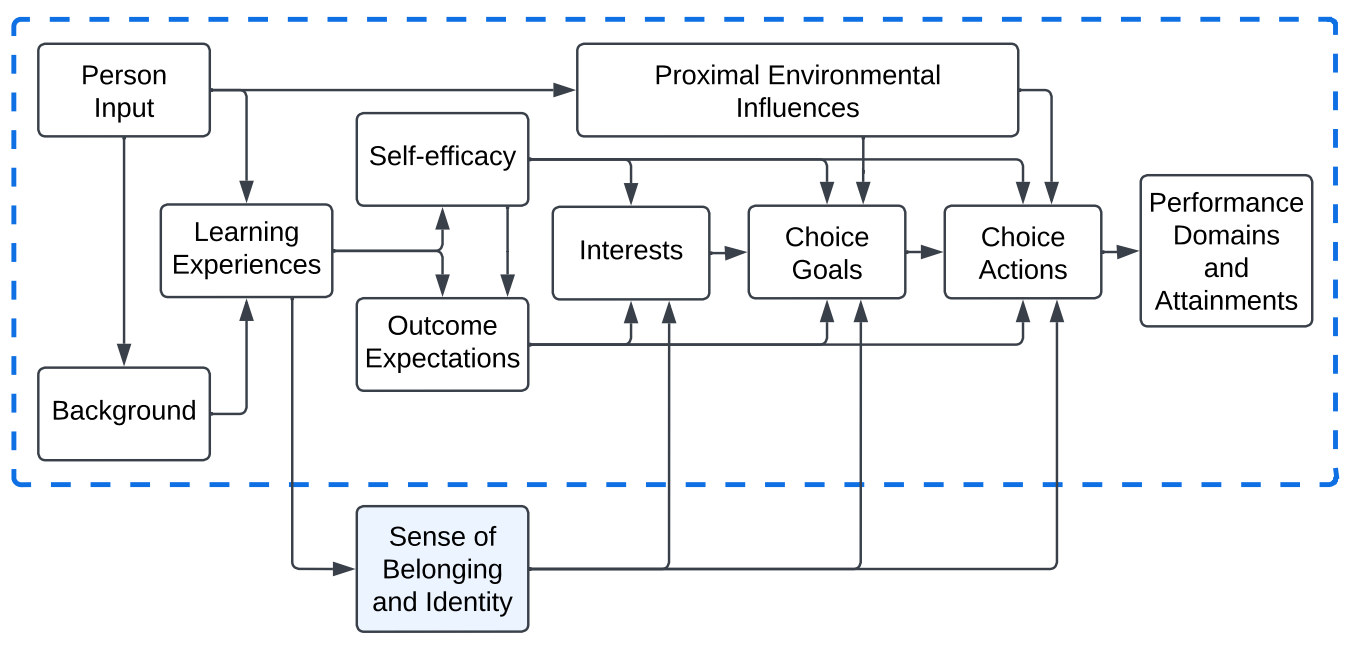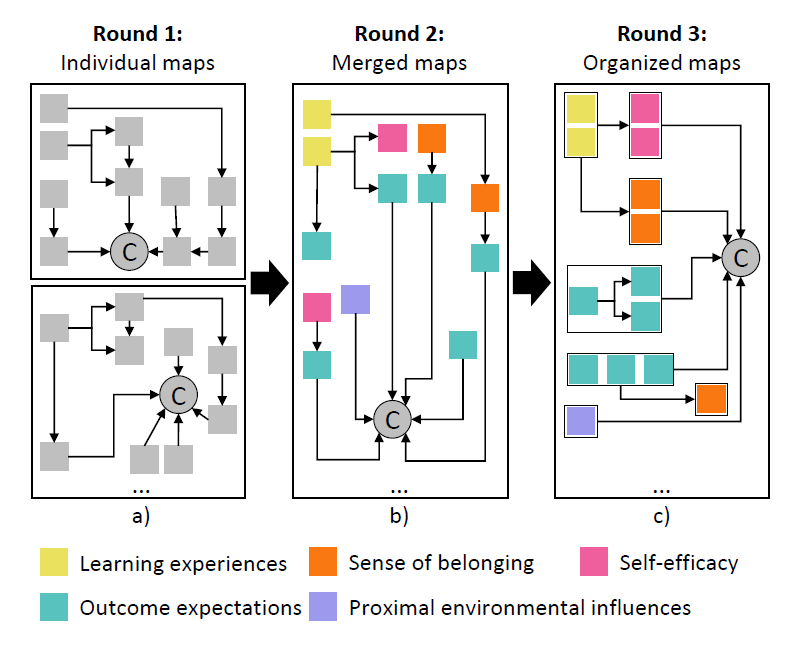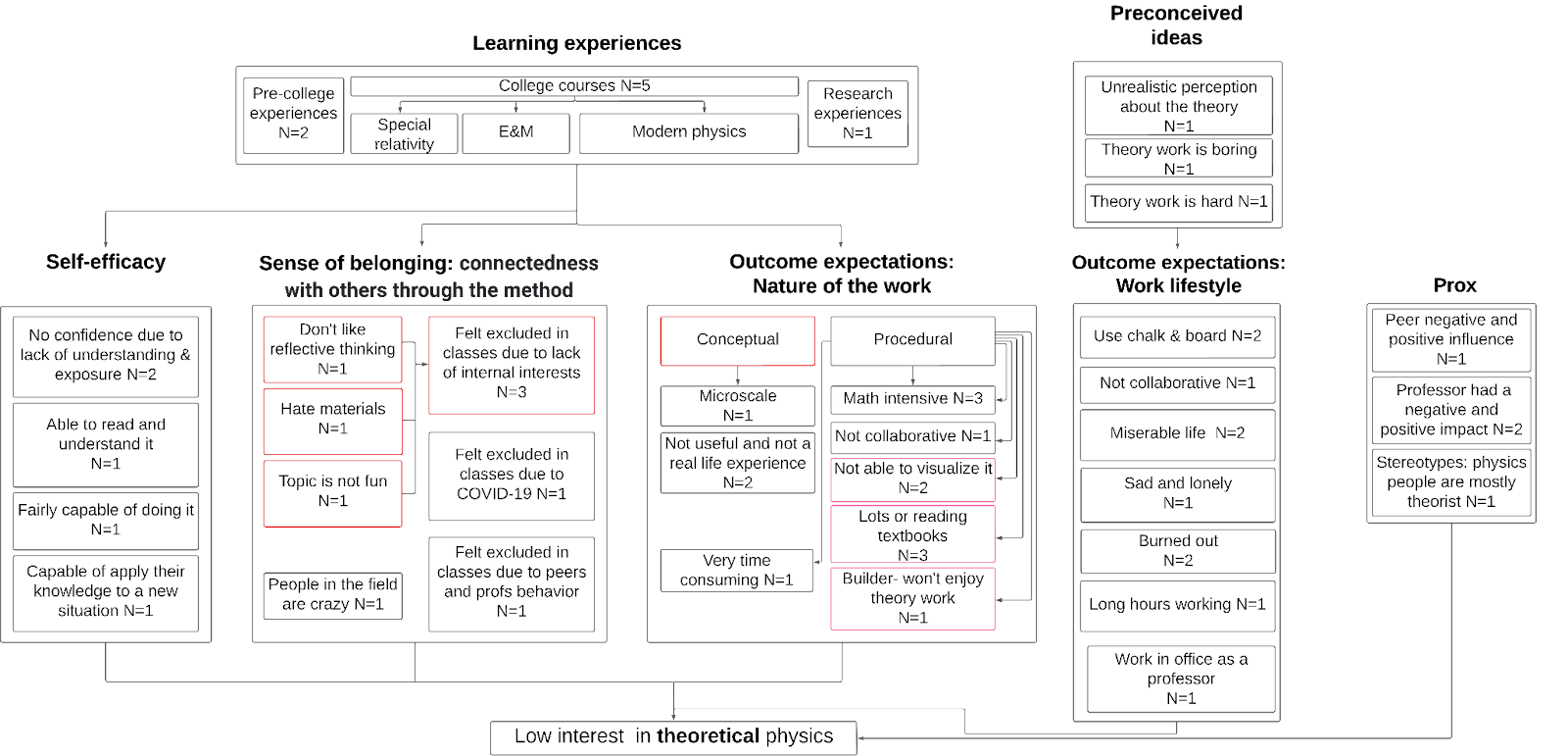Research Project
Career interests and decisions
Principal Investigator(s)
Ben Zwickl
Research Team Members
Students:
Nikki Noughani
Mateo Cacheiro (REU, Tennessee Technical University)
Brett Boyle (REU, Rowan University)
Alumni:
Keegan Tonry, Ridge Bennett, Pedro Cardona
Collaborators:
Dina Zohrabi Alaee (Coastal Carolina University)
Funding
Current funding
CAREER: Learning to solve problems in context-rich environments: A naturalistic study in STEM workplaces, research labs, project-based courses and lab courses, NSF Award 1846321, May 2019 – April 2024
Project Description
Impact
A bachelor’s degree in physics opens up varied career paths in academia, industry, and education. However, the diversity of paths can make the college to career transition difficult for many students. The physics community has recognized the need for improved support for students’ career awareness and decision-making (see APS/AAPT Effective Practices for Physics Programs). Our group is study three major aspects of career interests:
- pursuit of a job or graduate school;
- interest in particular methods, such as experiment, computation, or theory; and
- interest in particular subfields, such as biophysics or astronomy.
We hope to provide practical insights to departments that can be used to better support students. To this end, we have begun development of assessment tools that can provide easier data collection. For our analysis, we have begun to use graphical causal maps that better convey process and causal information.
Overview
The research builds on Social Cognitive Career Theory and science identity theories to reveal factors and experiences that influence interests. The portion inside the dashed box is the standard formulation of SCCT (Lent et al. 1994).

Social Cognitive Career Theory is a model of how career choices and decisions are made.
To date, our research has largely been qualitative, focusing on individual interviews, which examine the various facets of SCCT. Within the interviews, we can identity influences on interest and represent them as graphical causal models. The approach is similar to Revealed Causal Mapping.

Process for developing graphical causal maps based on interviews, which are then merged and thematically organized.
Methods interests
We have found that students with less exposure to experimental work during college had lower self-efficacy and lower interest in pursuing experimental physics as a career [2]. Outcome expectations, such as the necessity of computation for future careers, contributed strongly to higher interest levels even when students also expressed lower self-efficacy due to struggles or lack of experience. On the other hand, negative interest in theory was linked to outcome expectations that theoretical work was irrelevant and lacked applications. [4] This analysis led to a three-fold categorization of outcome expectations: nature of the work, future opportunities, and work/life considerations [4]. Regarding a sense of belonging, we found that some students felt their programming courses were particularly gender unbalanced and felt less of a sense of belonging. Contrastingly, some of the most positive forms of recognition and sense of belonging occurred in research experiences where faculty and other group members would notice and positively acknowledge students’ contributions [1].

Factors influencing a low interest in theoretical methods of physics.
Subfield interests
Regarding interest in particular subfields, we found that students had the most exposure to astronomy and astrophysics, primarily through popular science media, which was one contributor to picking physics as a major. Many juniors and seniors were unfamiliar with some subfields of physics, showing that the curriculum was insufficient for exposing students to a range of contemporary areas of physics. Even for areas with higher exposure, such as astrophysics, students had an unrealistic view of the day-to-day work, with some students turning away from astrophysics once they learned it often involved desk work at a computer rather than looking through a telescope. Additionally, negative experiences in high school or introductory biology and chemistry led some students to avoid subfields that overlapped with these other sciences (e.g., biophysics). Finally, regarding outcome expectations, some students strongly value doing work that helps others and has more direct applications, which leads them to avoid some subfields (e.g., astronomy) but find high interest in others (e.g., biophysics, physics education) [3].
References
- D. Zohrabi Alaee, M.K. Campbell, B.M. Zwickl, Impact of virtual research experience for undergraduates experiences on students’ psychosocial gains during the COVID-19 pandemic, Phys. Rev. Phys. Educ. Res. 18 (2022) 010101. https://doi.org/10.1103/PhysRevPhysEducRes.18.010101 .
- P. Cardona, D. Zohrabi Alaee, B.M. Zwickl, Access to opportunities affects physics majors’ interest and choice of methods specialization, in: 2021 Physics Education Research Conference Proceedings, 2021: pp. 87–92. https://doi.org/10.1119/perc.2021.pr.Cardona
- R. Bennett, D.Z. Alaee, B. Zwickl, Analysis of Physics Students’ Subfield Career Decision-Making Using Social Cognitive Career Theory, in: Physics Education Research Conference 2022, Grand Rapids, MI, 2022: pp. 51–56. https://doi.org/10.1119/perc.2022.pr.Bennett
- D. Zohrabi Alaee, K.S. Tonry, B.M. Zwickl, Analyzing Physics Majors’ Specialization Low Interest Using Social Cognitive Career Theory, appearing in: 2023 Physics Education Research Conference Proceedings, Sacramento, CA, 2023. https://doi.org/10.48550/arXiv.2306.15023